Max Operating Depth - MOD
Ref. 25-026/CMAS/TC - 15 August 2025
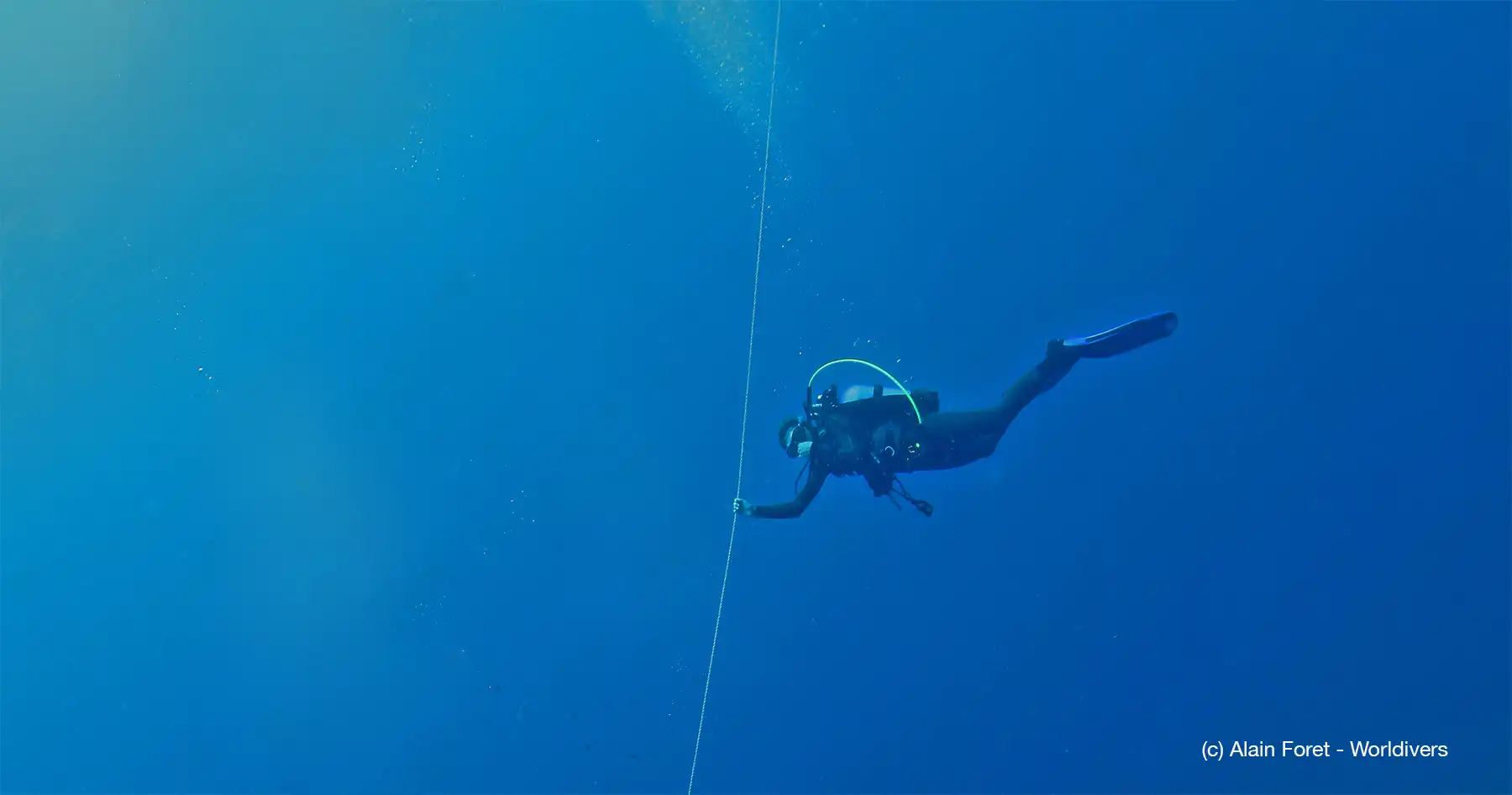
CMAS limits for recreational diving
CMAS limits for recreational diving:
- Bottom mix: max 1.4 bar PpO2;
- Oxygen/Nitrox desaturation (stop): max 1.6 PpO2;
- Air diving: 57 m (1.4 PpO2);
- Nitrox diving: depending on the percentage of oxygen in the nitrox and the PpO2 limit selected;
- Heliox, trimix (technical dives): 100 m.
Max Operating Depth
Depending on diver training and experience, the maximum depth for diving depends on:
- a physiological limit linked to the gas breathed (narcosis, hyperoxia, density, DCS);
- historical-social-touristic-cultural considerations which may lead certain organizations or countries to reduce this physiological limit.
1. Diving with air
Three limiting factors are to be calculated, in order to retain the most restrictive of the three as the physiological limit:
- the risk of nitrogen narcosis;
- the risk of hyperoxia;
- the density of the gas with the risk of CO2 retention.
1.1 Risk of nitrogen narcosis
Narcosis is “progressive from a depth of 35 to 60 m when diving with air, with no threshold effect, and systematic beyond 60 m” (PpN2 > 5.6 ATA).
Limit: 60 m.
Source : Louge P., De Maistre S., Rynier J.-C., Les accidents toxiques ou accidents "biochimiques" in Blatteau J.-E., Coulange M., Méliet J.-L, Médecine de la plongée, Medsuhypo, Elsevier Masson, 2024, p. 119.
1.2 Risk of hyperoxia
Oxygen neurotoxicity (Paul Bert effect) depends on oxygen partial pressure and duration of exposure.
The NOAA has drawn up an oxygen toxicity table, recommending that PpO2 should not exceed 1.4 bar for bottom mixing and 1.6 bar for desaturation (“stop”).
The NOAA has drawn up an oxygen toxicity table, recommending that PpO2 should not exceed 1.4 bar for bottom mixing and 1.6 bar for desaturation (“stop”).
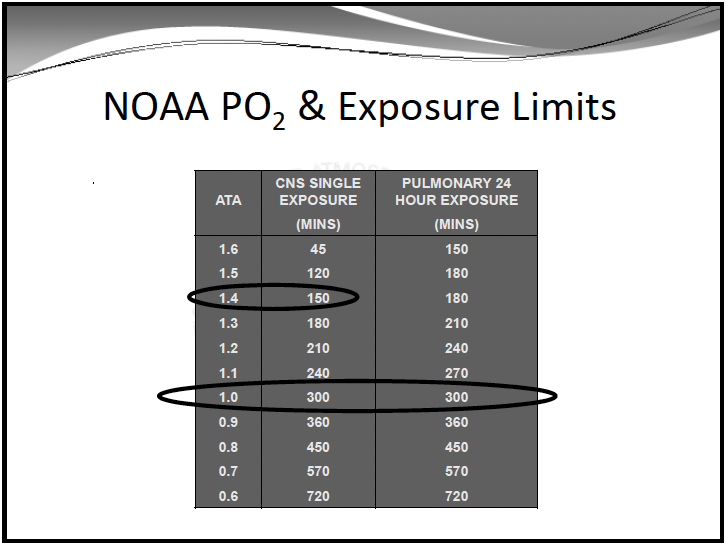
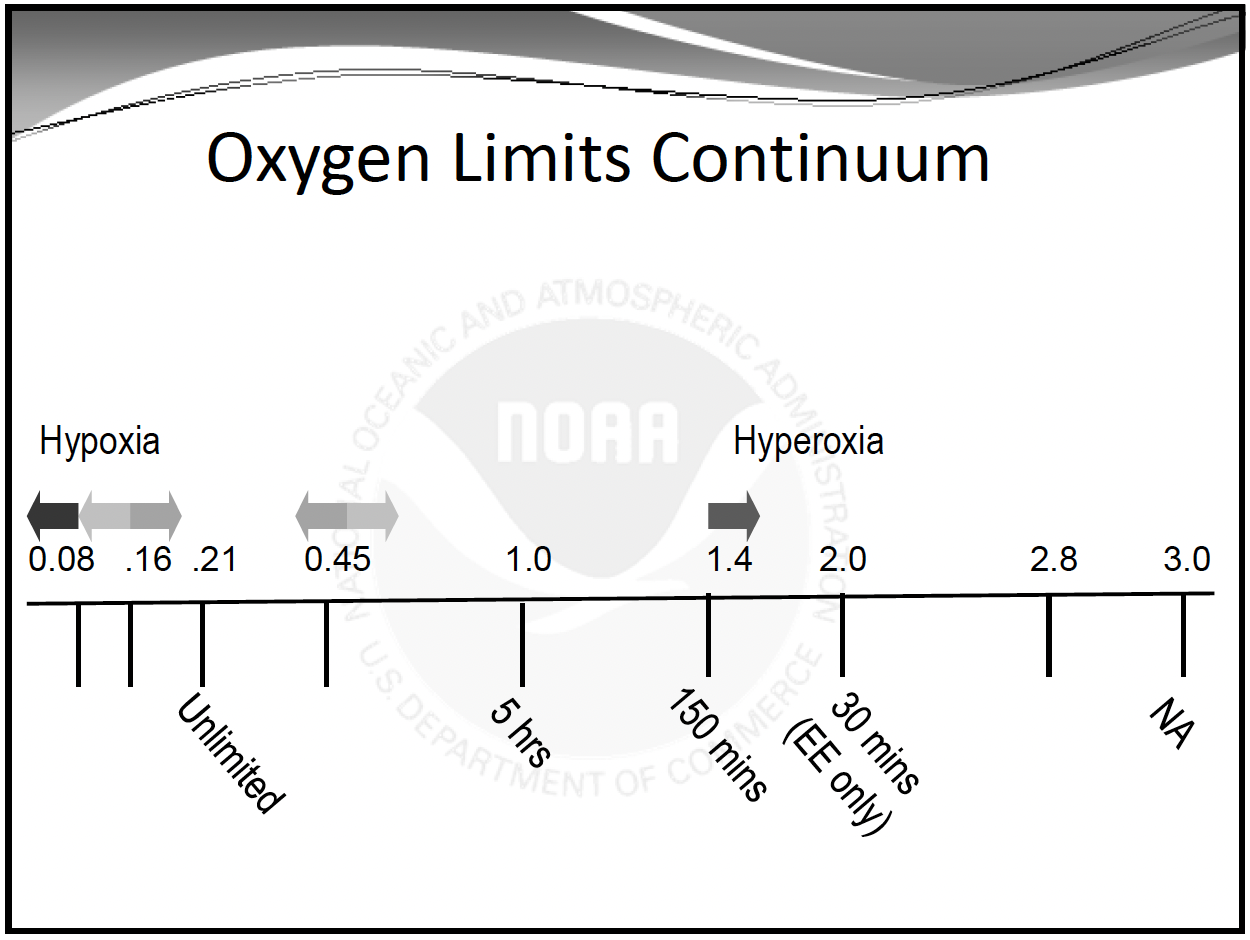
Source : NOAA Diving program, Diving Medical Technician Course, December 12 - 16, 2016 NOAA Diving Center Seattle, WA
Document NOAA
Document NOAA
CMAS limits: NOAA limits.
That is, for air dives: 57 m max. with a threshold of 1.4 bar PpO2.
1.3 Gas density
According to the work of the COMEX, "The density of a gas increases proportionally with the pressure exerted on it, which will lead to an increase in ventilatory resistance at great depths, thus reducing the diver's work capacity. To avoid shortness of breath, the density of a gas should not exceed 9g/l (i.e. 60 m in air) on current dives".
Source : Gardette B. et Plutarque M., Comex 50 ans de recherches et d'innovations, CACX, 2012, p. 104.
Source : Gardette B. et Plutarque M., Comex 50 ans de recherches et d'innovations, CACX, 2012, p. 104.
1.4 To sum up
In open circuit recreational diving, the physiological limit for diving with air, whether considering nitrogen (narcosis), oxygen (hyperoxia) or the density of the air (retention of CO2) is between 57 and 60 metres.
In rebreathers, this limit could be reduced because the CO2 retention factor in the ventilatory loop is higher than in the open circuit.
Other factors (divers with little training or few dives during the year, non-existent rescue resources, shallow depths prohibiting any deep dive training, etc.) may lead some countries or organisations to reduce this limit to 40 or 30 metres. This is a cultural choice, not a technical one.
In rebreathers, this limit could be reduced because the CO2 retention factor in the ventilatory loop is higher than in the open circuit.
Other factors (divers with little training or few dives during the year, non-existent rescue resources, shallow depths prohibiting any deep dive training, etc.) may lead some countries or organisations to reduce this limit to 40 or 30 metres. This is a cultural choice, not a technical one.
2. Nitrox dives
For nitrox dives (Enriched Air Nitrox - EAN), the maximum operational depth (MOD) depends on two factors:
- the percentage of oxygen;
- the maximum PpO2 limit (1.5; 1.4; 1.3, 1.2 ... bar).
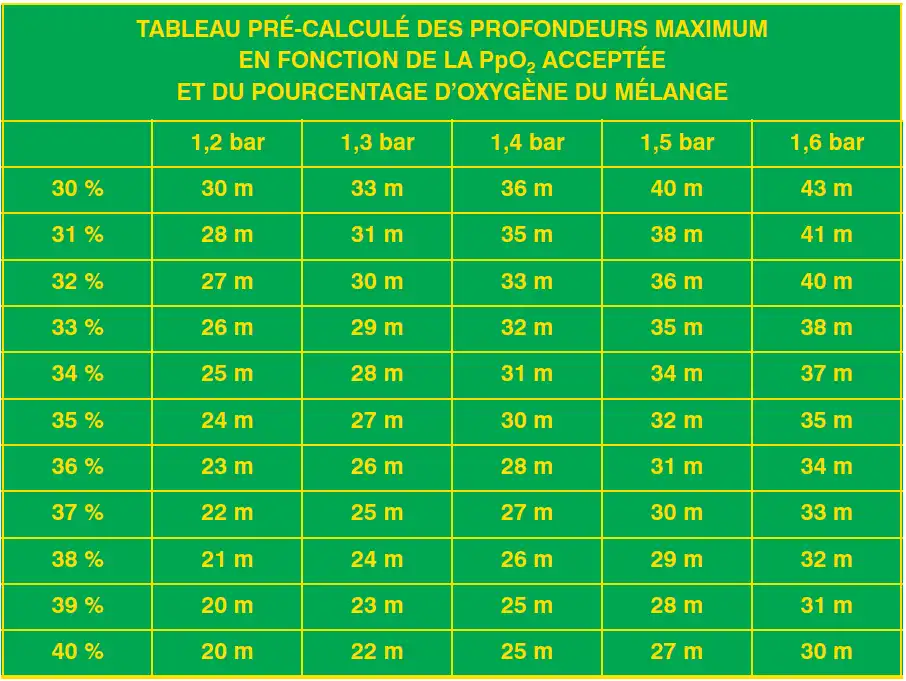
Tableau Alain Foret - Worldivers
3. Diving with helium (heliox, trimix)
The depth limit for helium diving is imposed by the risk of High Pressure Nervous Syndrome (HPNS), which depends on:
- the rate of descent;
- the depth reached; the risk appears above 150 m.
This risk can be mitigated by adding nitrogen to the helium mixture (trimix).
As with air or nitrox diving, the depth limit is set below the physiological limit, with a greater or lesser safety margin depending on culture and the need to reach agreement with a number of parties (e.g. international agreements):
- Some countries, pioneers in diving with a culture of deep diving, set a limit of 120 m (e.g. France).
- The CMAS sets a limit of 100 m, defined internationally for recreational diving.









